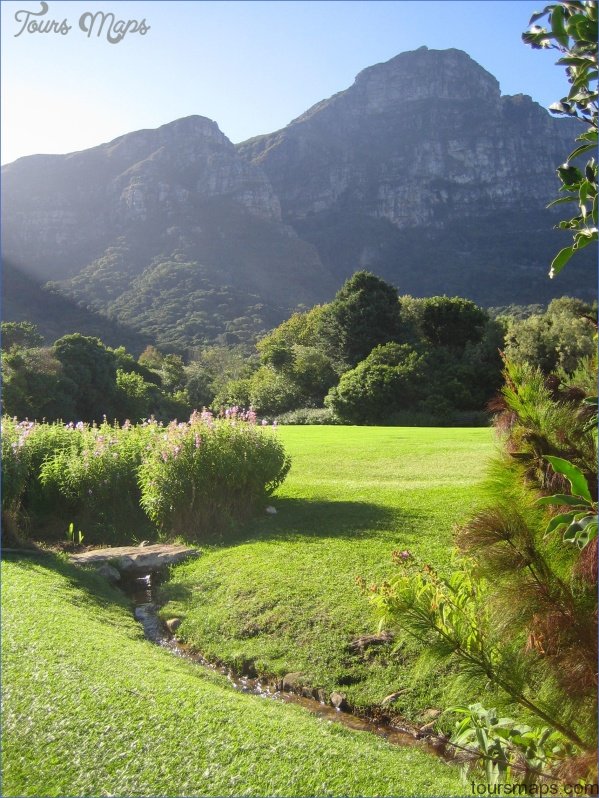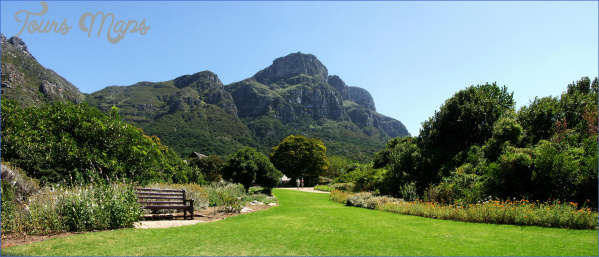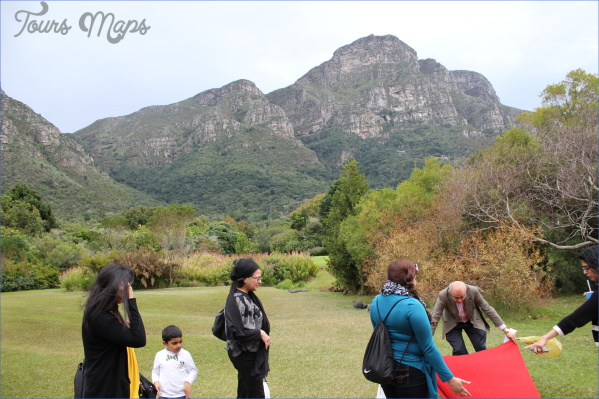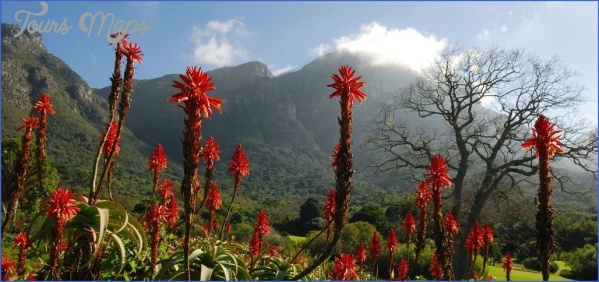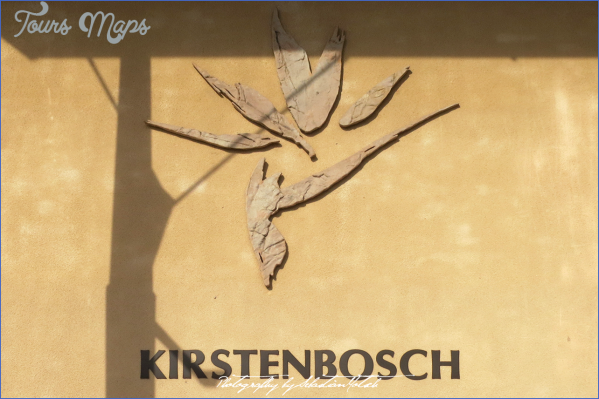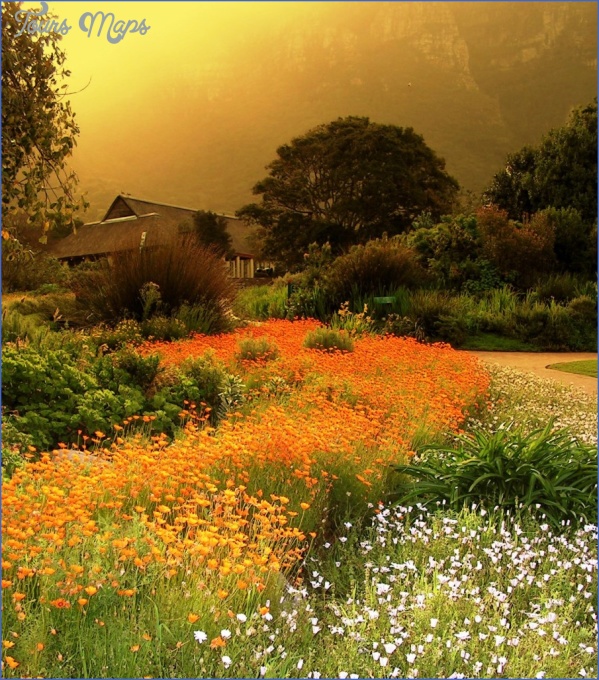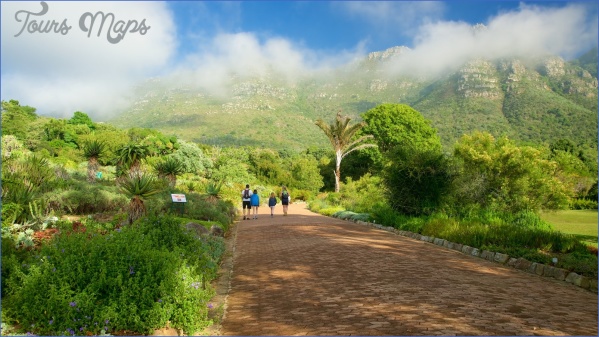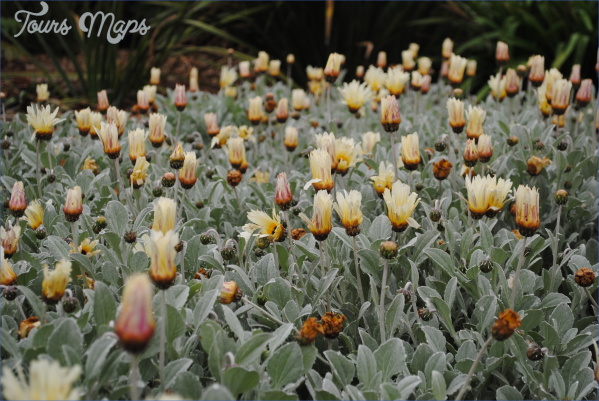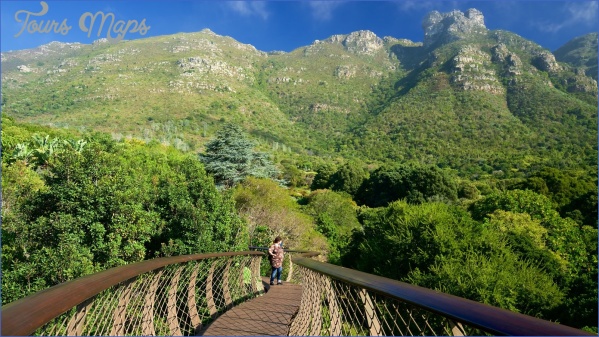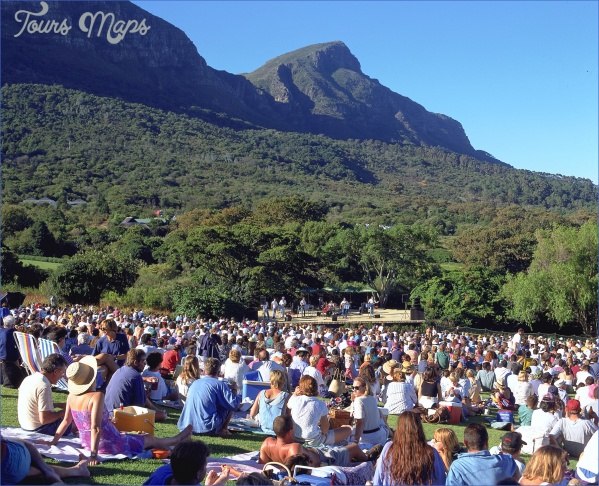The Cape Flats lies hidden below a sea of cloud embracing the mountain’s lower slopes. The Garden’s 150-million-litre reservoir is in the foreground.
Kirstenbosch National Botanical Garden Road Trip Photo Gallery
Designing Eden At establishment on 1 July 1913, Kirstenbosch covered 134 hectares. Gradual additions as indicated on this map brought the total area owned by the Garden to 199.2 hectares by 1992, with an additional 299.8 hectares being managed as part of the Garden since 1922. The position of the original Leendertsbos is indicated by a dashed line. Botanical gardens, as national or private institutions, went through a vibrant renaissance during the late 20th century, and this positive turn of fortune continues to this day. Many new and exciting gardens have been built in the space of a few years, often at huge expense and following ambitious master plans. The Eden Project in Cornwall is a fine example of such initiatives, as are new gardens in Wales, Singapore, Oman and Australia. Garden design has become a major industry, and landscape architecture a respected profession. But Kirstenbosch was different – it has never had a formal horticultural ‘master plan’. Compton remarked: landscaping at Kirstenbosch was always renderedfutile by the grandeur and diversity of its setting – the landscape was already there … in the special conditions of Kirstenbosch, a fixed design too rapidly carried out might have had worse results ’. Until the defining work of Lancelot ‘Capability’ Brown in the 18th century, garden design in Europe was founded on the assumption that man should impose his vision on the site – not that the site should suggest the design. Brown took a different approach, looking first at what the landscape was capable of providing. This thinking was clearly at the heart of what Mathews and his successors created at Kirstenbosch.
The terrain and its habitats determined the early design of the Garden: the moist dell and the waterlogged ‘bog garden’, the dry ‘aloe koppie’, the well-drained protea section. These features, along with the extensive undulating lawns, clumps of trees and shrubs, discreet water features, rough-cut walls using local stone, and integrated plantings of selected fynbos and other floristic groups, give the Garden its unique impact. The mountain backdrop has afforded the blending of intensively landscaped gardens across the lower reaches of Kirstenbosch with a gradual transition into the natural vegetation along the upper slopes.
Some attempts were made to group plants on a systematic basis, according to their families, in the tradition of medicinal gardens, but this was short-lived. So, too, was the attempt to grow a Cape Chestnut avenue, described by Compton as ‘leading from nowhere to nowhere’. An orchid garden, in honour of the great benefactor and amateur botanist, Harry Bolus, had to be abandoned after several years of frustration.
Construction of the Garden’s 150-million-litre reservoir in the 1980s ensured an adequate supply of water for the gravity-fed irrigation system.
At first, Mathews had to make do with the normal variations and uncertainties of rainfall. But as the Garden grew in size and complexity, more reliable water resources were essential. A small reservoir and boreholes were replaced in 1988 by a large reservoir with a capacity of 150 million litres. In 1990 the Botanical Society provided funding for an extensive automated irrigation system, sufficient to keep the Garden’s 12 hectares of lawns lush and green through the hot, dry summer. Old metal pipelines, corroded by the acid waters of the mountain streams, were replaced with resistant PVC pipes. Automated pumps could ensure irrigation at night to preclude the sudden saturation of strolling visitors. Equally important, in the 1980s, a large ‘compost factory’ was developed, using all garden cuttings and clippings to produce 1 500 tonnes of rich, organic compost each year.
Kirstenbosch not only grows plants – it also grows generations of loyal staff members. Consider master stonemason Abraham ‘Awie’ Basson, who started working at Kirstenbosch in 1926, at 12 shillings a week. His father had preceded him at Kirstenbosch, as had his mother. Retiring at 65, after 48 years in the Garden, he recalled his life at Kirstenbosch as ‘working hard, but working jolly’.
Maybe You Like Them Too
- Top 10 Islands You Can Buy
- Top 10 Underrated Asian Cities 2023
- Top 10 Reasons Upsizing Will Be a Huge Travel Trend
- Top 10 Scuba Diving Destinations
- World’s 10 Best Places To Visit











